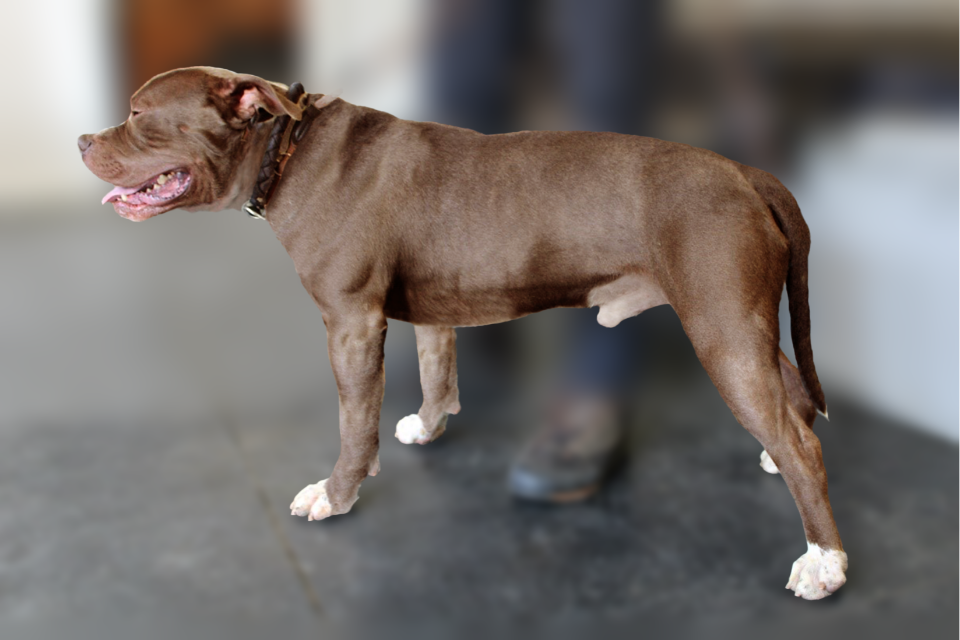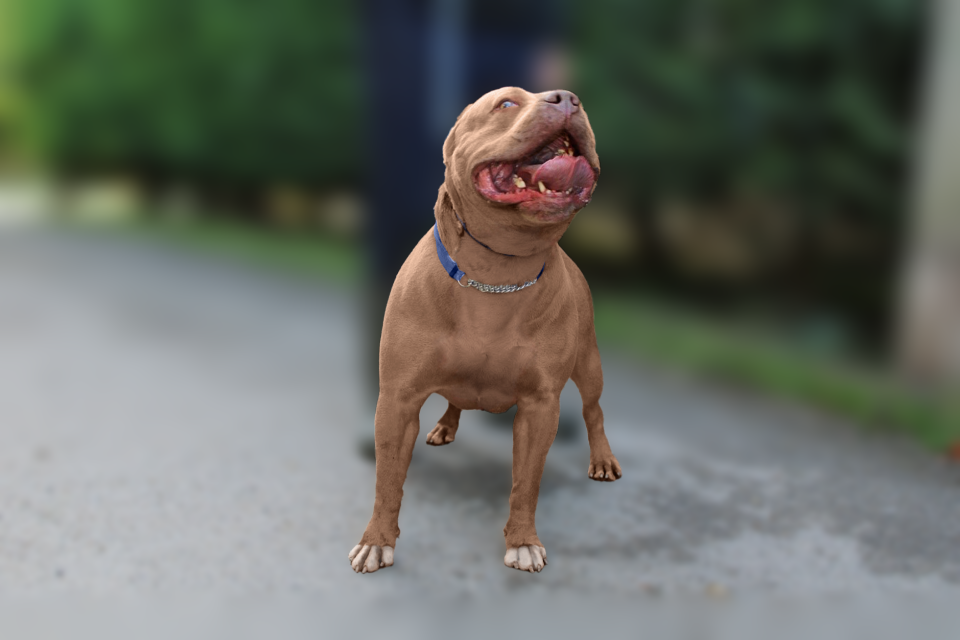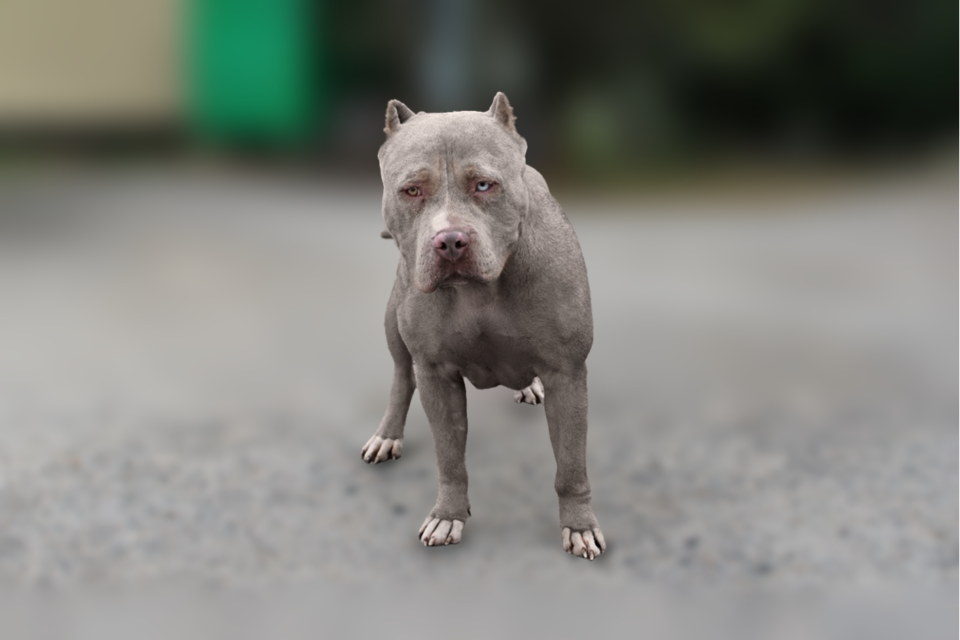XL Bully conformation standard
Updated 1 February 2024
Applies to England and Wales
General impression
Large dog with a muscular body and blocky head, suggesting great strength and power for its size. Powerfully built individual.
Height
- Adult male from 20in (51cm) at the withers
- Adult female from 19in (48cm) at the withers
Head
- Heavy, large and broad
- The length from the tip of the nose to a well-defined stop (indentation between muzzle and the head) is equal to around one-third of the length from the tip of the nose to the back of the head
- Muzzle blocky or slightly squared to fall away below the eyes
- Topline of muzzle straight
- Prominent cheek muscles with strong, well-defined jaws and lips semi-close
- Often having prominent wrinkles on face
- Nose is large with well opened nostrils
Teeth
Level or scissor bite.
Neck
- Heavy, muscular, slightly arched, tapering from the shoulders to the base of the skull
- Medium in length
Forequarters
- Shoulder blades are long, well-muscled and well laid back
- Upper arm length is about equal to the length of the shoulder blades and joined at a 35 to 45 angle to the ground
- Front legs straight, strong and very muscular with dog standing high on the pasterns (area between feet and ankles)
- Elbows set close to the body
- Distance from the withers to elbows about the same as the distance from the elbow to the bottom of the feet
Body
- Heavily-muscled
- Large, blocky body giving impression of great power for size
- Broad, deep chest with well sprung ribs
- Chest may be wider than deep
- Topline level and straight
- Loin short and firm
- Generally appears square shaped from point of the shoulder to the point of the buttocks compared with the withers (tallest point on the dog’s body excluding head and shoulders) to the ground
Hindquarters
- Strong, muscular and broad
- Thighs well developed with thick musculature
- From behind, both pasterns are typically straight and parallel to each other
- Muscular development, angulation and width in balance with forequarters
Feet
- Rounded, medium in size and in proportion to body
- Compact and well arched
Tail
- Medium length and low set
- Tapers to a point to end at about the level of the hocks
- Generally assumes a straight or pump handle shape when dog relaxed
Coat
Glossy, smooth, close, single.
Note: descriptors such as ‘medium in length’ and ‘long’ will be assessed by Dog Legislation Officers relative to the conformation of the rest of the dog.
Glossary
Bite: the relative position of the upper and lower teeth when the mouth is closed.
Coat: the hairy outer covering of the skin.
Croup: part of the back from the front of the pelvis to root of the tail.
Forequarters: the front part of dog excluding head and neck.
Hindquarters: rear part of dog from behind the loin.
Loin: the region between the last rib and the beginning of the pelvis.
Musculature: the muscles on an animal’s body.
Muzzle: the length from the tip of the nose to the stop.
Pasterns: the pastern is the lower part of the foreleg, just above the foot and below the wrist. Similarly, in the hind leg, the pastern is the portion located above the foot and below the heel (also known as the hock). Every canine possesses a pair of front and rear pasterns.
Scissor bite: the upper front teeth closely overlapping the lower teeth and set square to the jaws.
Spring of rib: degree of curvature of rib cage.
Tail set: the position of the tail on the croup.
Tapering: becomes progressively smaller towards one end.
Topline: an outline after the withers to the tail set. Viewed from the side of the dog or from above.
Withers: the highest point of body immediately behind the neck where height is measured.
Examples of XL Bully breed types
These pictures are indicative of what an XL Bully dog looks like. A dog does not have to look exactly like this to conform with the standard.
Note: some of these dogs have cropped ears. The cropping of a dog’s ears is an offence under the Animal Welfare Act 2006.
Dog 1


Dog 2


Dog 3


